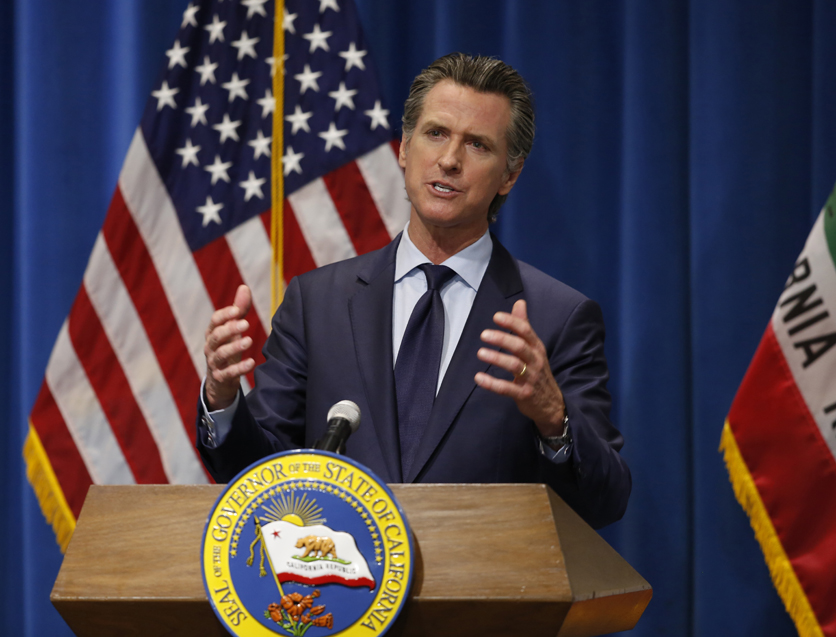Facing a $54.3 billion deficit, California lawmakers checked their “to do” list earlier this week and approved a new budget just ahead of the June 15 constitutional deadline. While the measure largely aims to avoid deep cuts in education and health care and assumes that more federal funds will be forthcoming by Oct. 1, concrete details on what taxpayers can expect for the 2020-21 budget year are still somewhat illusive.
“We could have done all the devastating cuts, like some folks have asked about, and maybe that would have helped us with Wall Street,” said Phil Ting, a Democrat and chairman of the Assembly Budget Committee, during floor debate on Monday. “But this is a budget for Main Street."
Most of the heavy lifting is taking place during negotiations with Gov. Gavin Newsom in preparation for the new fiscal year kickoff on July 1. But even by then, it’s unlikely the governor will know what funds will be available.
The filing deadline for state taxes was delayed until July 15, making it difficult to estimate incoming tax revenue.
U.S. Senate Majority Leader Mitch McConnell is not in any rush to push forward another COVID-19 aid package until more is known about how existing financial aid has worked.
The Senate may consider a larger COVID-19 aid bill in late June or July, but insists it won’t be nearly as large as the $3 trillion HEROES Act the House passed last month, McConnell indicated during an interview with Agri-Pulse late last month.
“It’s going to be important for it to be narrowly crafted and to fix some of the things that were not done correctly in other measures,” he told Agri-Pulse’s Jeff Nalley. He said the bill must contain liability protections to shield for businesses from coronavirus-related lawsuits, and also would likely include more funding for payments to farmers.
Newsom said the state will need at least $14 billion from the federal government to avoid similar cuts in state programs, but urged state lawmakers to take a different path: Make budget cuts as if there would not be any more money from Washington.
The governor’s proposal to temporarily raise taxes on some businesses was also approved by the Legislature and is expected to generate an extra $4.4 billion. As a result, over the next three years, businesses with more than $1 million in revenue will be unable to claim losses as a tax deduction. The measure also limits the number of tax credits businesses can claim.
The budget outlook represents a stark change from the economic picture in January, when Newsom offered a balanced budget plan with a $5.6 billion surplus and record reserve levels. As he noted with his May Revision, “the rapid onset of the COVID-19 recession in California has resulted in more than four million unemployment claims being filed since mid-March, the unemployment rate is now projected to be 18% for the year, and there is a $41 billion drop in revenues compared to January’s forecast. With a higher demand for social safety net services increasing state costs, the $54.3 billion deficit is more than three times the size of the record $16 billion set aside in the state’s Rainy Day Fund.”
Still, there are several signals on priorities from both the Governor and the legislature related to food and agriculture.
One proposal in alignment is for CDFA to receive $150 million “to backfill the loss of revenue from parks fees and the fuel tax as a result of COVID.” As parks closed and few people were on the roads during the stay-at-home order, CDFA lost valuable revenue streams.
The two branches also agree on spending $40 million for CDFA to cover layoffs for civil service employees and other liabilities as state fairs close.
The budget also provides about $6.5 million to pay for lawsuits against the Trump administration, including more than $1 million to litigate the biological opinions for Bay-Delta flows.
In addition, $10 million for a farm-to-school grant program remained in both budgets, while another $70 million in funds for schools to procure healthier foods and conduct workforce training was dropped in the May Revise.
“I can’t predict, but chances seem solid that this (farm-to-school) program will survive,” noted Lena Brook, director of food campaigns for the Natural Resources Defense Council, based in San Francisco. She said the concept was supported by more than 80 organizations, including farmers, environmentalists and sustainable food advocates.
“It’s not only a way to benefit small and mid-size producers who are traditionally underserved in federal farm programs, but can help build regenerative regional food systems that can help us weather a future food chain crisis,” she added.
For more news go to: www.Agri-Pulse.com



